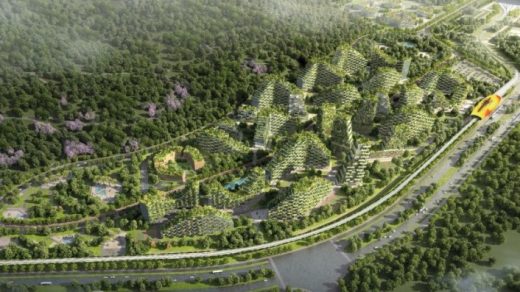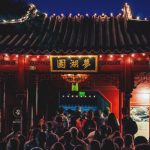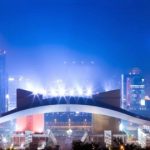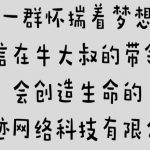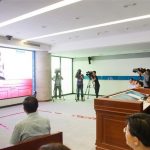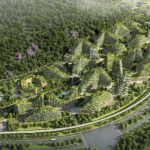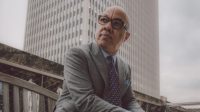Inside China’s Plan For A Massive Forest-Covered City
Liuzhou, an industrial city in southern China, looks like a typical modern Chinese metropolis, filled with concrete high-rises and often shrouded in smog. But the city’s newest district, in planning now, will be different: Every building, from schools to office and apartment towers, will be covered in trees and plants.
Called “Forest City,” the area–roughly half the size of Central Park–will be home to 30,000 people, 40,000 trees, and nearly 1 million plants. It’s similar to a design first realized in Milan–where the project’s architect, Stefano Boeri, completed two tree-covered skyscrapers in 2014–but at a much larger scale.
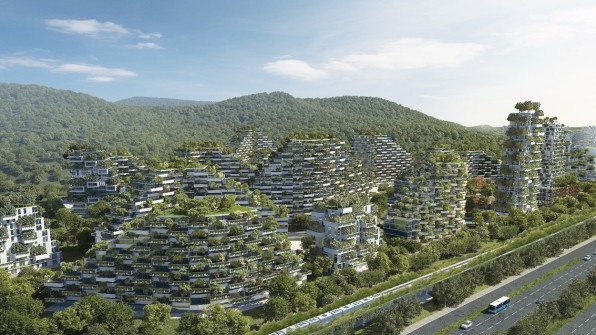
The district, in the northern part of Liuzhou, will connect to the rest of the city via a rail line, and will include two schools, a hospital, and residential and commercial areas along with parks. From a distance, the terraced, tree-covered buildings will echo the shape of nearby hills.
In any project, Boeri’s team begins by planning landscaping on the ground. But by adding a dense network of trees and shrubs to balconies, it’s possible to multiply the benefits of greenery in an urban neighborhood. In Milan, the two towers house as many trees as might be found on five to seven acres of actual forest, on roughly a tenth of the land. In Nanjing, China, where the architecture firm is working on another two towers, the buildings will have as many trees as nearly 10 acres of forest.
“[It’s] like a graft,” says Boeri. “You are nesting, in the center of a super dense and polluted environment, an ecosystem which has an amazing biodiversity, and which can really contribute in terms of absorption of CO2, production of oxygen, and absorption of the fine dust of pollution.”
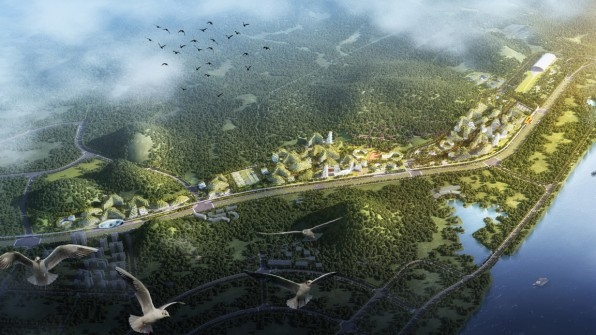
Forest City, he says, will absorb an estimated 10,000 tons of carbon dioxide and 57 tons of particulate air pollution each year, while producing 900 tons of oxygen.
The architecture firm began working on the concept with another Chinese municipality a few years ago, as the Chinese government began to seek new approaches to development (that city, while still interested, hasn’t yet chosen to implement the idea, while Liuzhou is preparing to begin construction). Each year, millions of people in rural China move to cities seeking better jobs; in the past, government planners have often responded by adding suburban sprawl.
“They extend the periphery of the metropolis, and this addition of low-priced, low-quality settlements produces every year this crazy extension of a mediocre and polluted urban environment,” Boeri says. “I think what now is evident to the government is that this kind of answer to urbanization is now in doubt because it has so many disadvantages in terms of quality of life, air pollution, the cost in terms of commuting… I think they are in search of possible alternatives.”
The design also helps fight climate change close to a source of pollution. Cities are responsible for around three-quarters of the world’s carbon emissions. “Forests are absorbing 35-40% of that CO2,” says Boeri. “So the idea to move forests inside the city…it’s a way to meet the enemy in its field.”
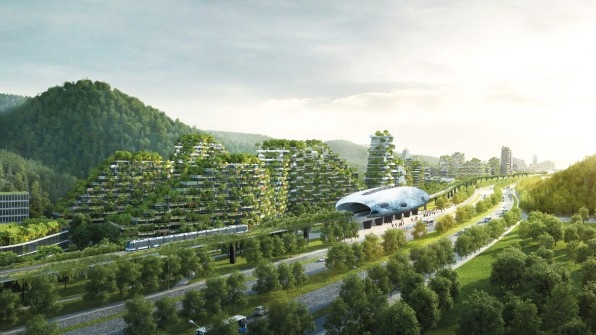
The development is also meant to produce fewer emissions when it’s used. Buildings will run in part on geothermal energy and solar power, streets will be walkable and bikeable, a train station will serve commuters, and the city is also considering investing in electric cars for the area.
“We are trying to always combine the presence of green with the presence of technological devices such as renewable energy,” he says. “All of this, in the end, works together. The leaves are also contributing to reduce the temperature of the surfaces on the sides of the building. In Milan in the summertime, the costs of energy consumption are drastically reduced by the presence of the leaves that are shading the facade.”
Incorporating thousands of trees on buildings poses new design challenges. “We had, from the beginning, to deal with problems that normally you don’t have when you build a traditional building,” he says. In the first buildings in Milan, the architects worked with botanists to ensure that the trees would survive, and with the engineering firm Arup to calculate how heavy the soil should be (not too heavy for balconies to support, but heavy enough to keep trees stable on windy days) and developed a new way to stabilize roots in planters. As they have tweaked this system, they test trees in a wind tunnel in Florida to ensure that the design is safe. The overall system, they say, is working. In Milan, the apartments are occupied (at least one is also an Airbnb), and a team of gardeners regularly rappel down the skyscrapers to take care of the trees.
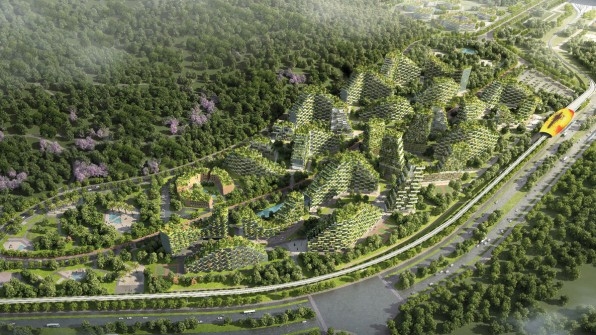
In Liuzhou, living in the new district will be different from living anywhere else in the world–standing in a high-rise, residents will see a city skyline made of leaves. Walking to work or the train station will feel a little like walking in the woods. It’s likely that biodiversity of animals will increase. In Milan, the team has observed 20 species of birds nesting in the building, most of which weren’t common in the city before. “You have this crazy perception of proximity with nature when you are in your bedroom or your kitchen,” Boeri says.
Though China has a history of planning some “eco cities” that were never actually built–and construction of Forest City has yet to begin–Boeri is confident that the project will continue to move forward. After completing the concept design, the team is now designing buildings for the first of three phases of construction. The architects haven’t published the cost, but the Milan skyscrapers cost only 5% more than traditional skyscrapers. Construction is likely to begin in 2020.
As Boeri’s team plans similar buildings in Paris, Utrecht, and other cities, he’s hoping that the Liuzhou development inspires others to incorporate more greenery into facades. “I think that in two or three years, there will be many other architects that will start to replicate and to improve what we have done,” he says. “We didn’t copyright anything, because we want to be copied, in a way. We hope that there will be other architects that will be better than us.”
Architect Stefano Boeri designed tree-covered skyscrapers in Milan. Now he’s doing a lot more in Liuzhou, China.
Liuzhou, an industrial city in southern China, looks like a typical modern Chinese metropolis, filled with concrete high-rises and often shrouded in smog. But the city’s newest district, in planning now, will be different: Every building, from schools to office and apartment towers, will be covered in trees and plants.
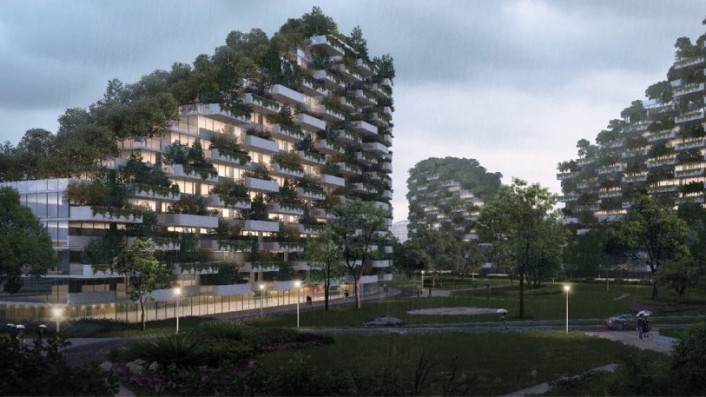
Called “Forest City,” the area will be home to 30,000 people, 40,000 trees, and nearly 1 million plants. [Image: Stefano Boeri Architetti]
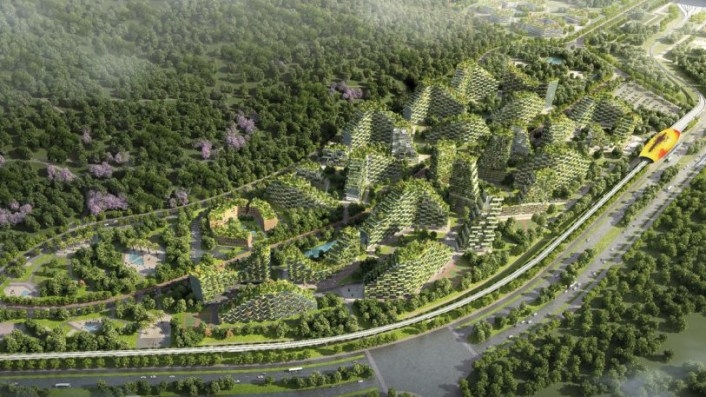
From a distance, the terraced, tree-covered buildings will echo the shape of nearby hills. [Image: Stefano Boeri Architetti]
Fast Company , Read Full Story
(37)

